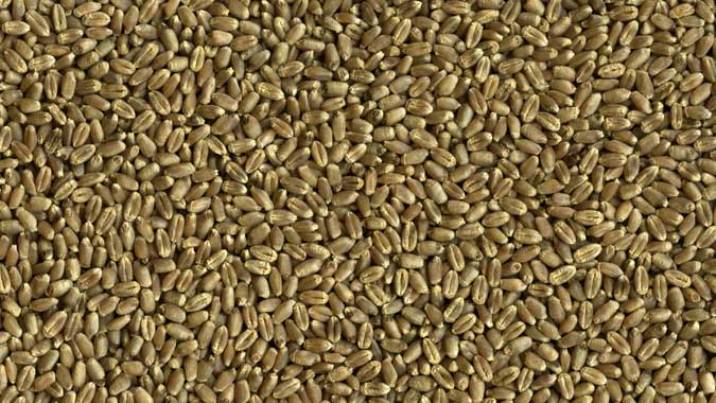July 29, 2013

South Dakota State University (SDSU) swine experts suggest pork producers who saw low test weight wheat this summer may have an opportunity to add value by marketing it through pigs. “Pigs are an excellent way to market grains, especially light weight and weather-stressed grain that may be docked at the market,” says Bob Thaler, SDSU Extension swine specialist. “As long as the light weight grains are properly formulated and mixed, it can be a win-win situation for both the grain farmer and pork producer.” Low test weight grains typically contain more protein and fiber and have less starch and energy than normal test weight grains, Thaler explains. However, depending on the test weight, it can be fed to pigs with little to no effect. “Multiple research trials have shown that you can reduce grain test weight up to 10% without affecting feed efficiency, and you can lower it up to 25% without affecting daily gain,” he says. Basically this means that pork producers can feed down to 54 lb. wheat without affecting growth performance and down to 45 lb. without affecting gain. “Once you get below 54 lb. of wheat, feed efficiency will suffer,” Thaler says. “However, if the wheat is purchased at a reduced enough rate, producers can still make money – even with poorer feed efficiency.” Know the Mycotoxin Status A key in feeding light test weight grains, Thaler says, is knowing the grain's mycotoxin status. “If it is free of mycotoxins, then you can strategically feed it in specific phases,” he says. Since light test weight wheat is lower in energy, Thaler says it should be fed in grow-finish and gestation diets. “Once they get past 80 lb., pigs can compensate for the lower energy by eating more feed so gains should be the same,” he says. “Since we limit-feed gestating sows anyway, it is the perfect feedstuff for them. However, since we want to maximize feed/energy intake for lactating sows and nursery pigs, it's best to keep it out of those phases.” Like what you’re reading? Subscribe to the National Hog Farmer Weekly Preview newsletter and get the latest news delivered right to your inbox every week! If the grain does contain mycotoxins, then it should only be fed in the late grower and finishing phases, Thaler says, and blended with “clean” grains to get the diet's total mycotoxin concentration at or below recommended levels. Wheat Works Wheat is an excellent feedstuff for pigs since it is higher in protein, lysine, and phosphorus than corn, Thaler says. “It can be the sole grain source in swine diets. Lightweight wheat can also be the sole grain source for grow-finish pigs and gestating sows. However, producers can blend it with normal test weight corn to offset the energy reduction of the diet if they want,” he says. Because light test weight grains have less bulk density and will fill up a mixer quicker, Thaler says, when using light test weight wheat or other grains it is essential that a scale is used on the feedmill or grinder mixer. For example, a 2-ton/4,000-pound mixer can hold 66.7 bu. of normal, 60-lb. wheat, but that same mixer can only hold 3,602 lb. of 54-lb. wheat. “Therefore, if just adding ingredients volumetrically, the diets will not contain enough wheat or the desired nutrient levels,” he says. He adds that wheat, whether normal or light test weight, should not be finely-ground. “It should be ground or rolled to 700 microns, and rolling is preferred over hammermills for wheat,” Thaler says. Also, light test weight wheat and grains will be dustier than normal grains during feed processing, and since they contain more fiber, it may take more management to make sure it flows through automatic feeding systems and feeders properly. For more information, contact Bob Thaler, SDSU Extension swine specialist, at (605) 688-5435 or Ashley Gelderman, SDSU Extension swine field specialist, (605) 782-3290. |
You May Also Like


